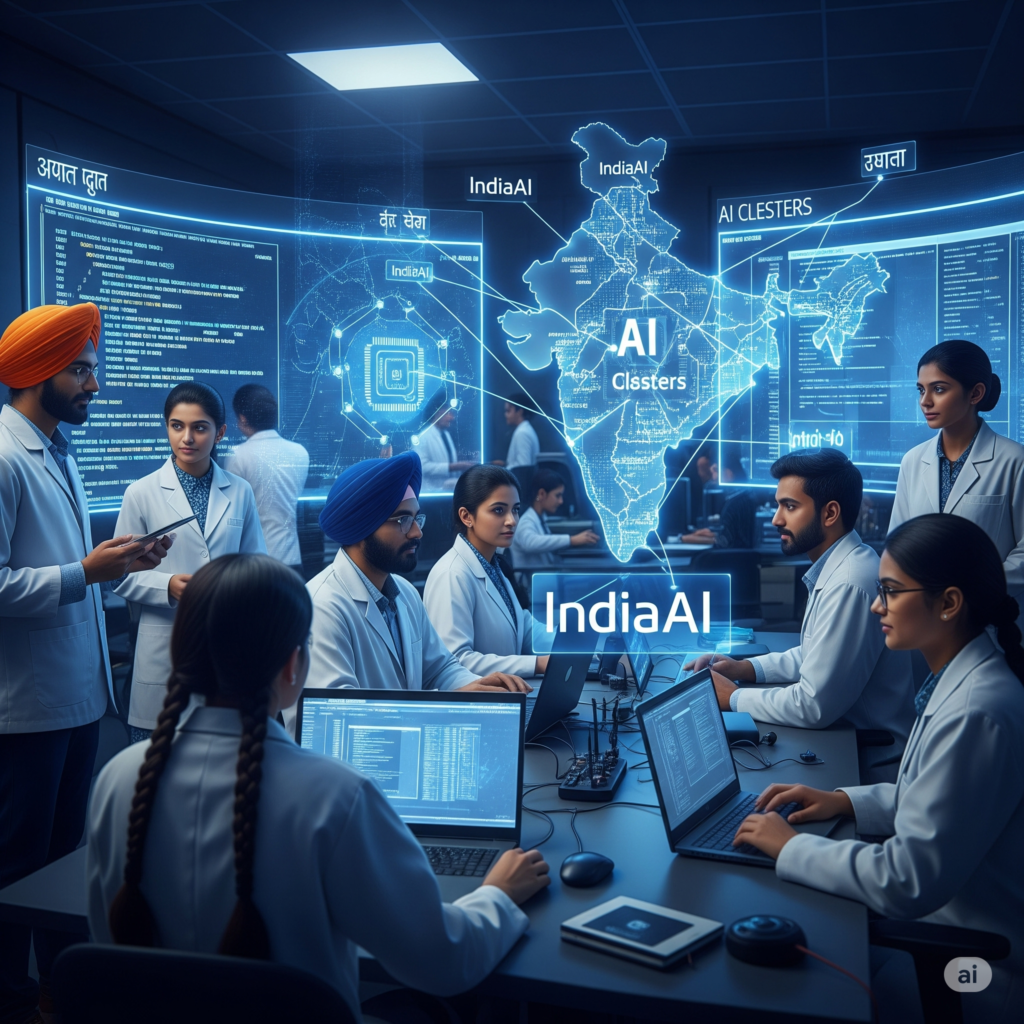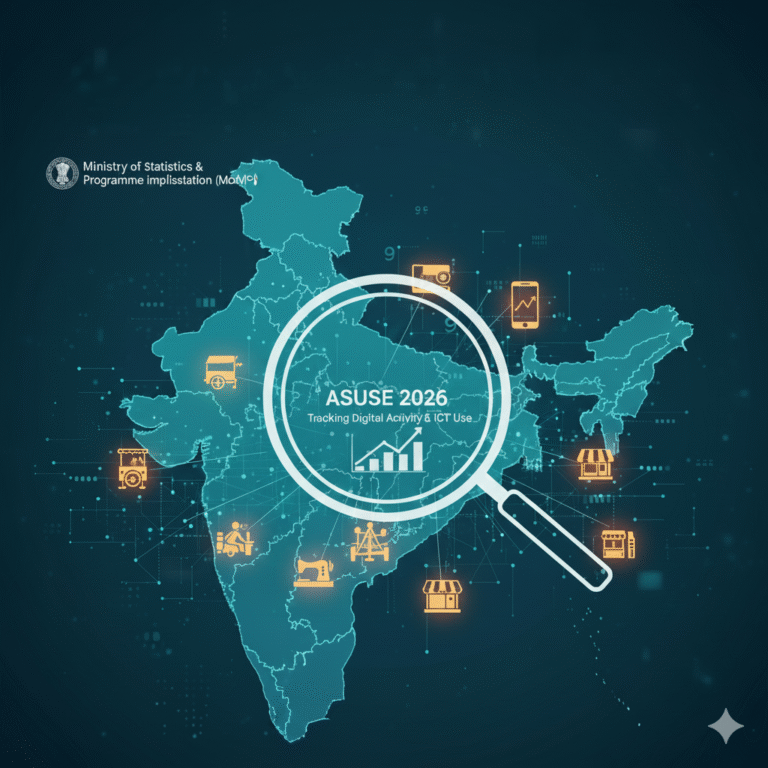India stands at an AI crossroads. A tech-savvy nation with the world’s largest youth population, proven IT prowess, and a billion-strong data pool—yet, the country is still reliant on foreign AI models, data monopolies, and imported hardware for its most strategic digital tools. The promise is clear: India can rise as a true global AI power, but only by investing in sovereign models, world-class research, a robust chip ecosystem, and the next generation of native talent. Here’s how India can chart its own trailblazing path in artificial intelligence.
Why Sovereign AI Matters: Beyond “User Nation” Status
India’s digital future must be built, not bought. Relying solely on imported models and platforms:
- Risks strategic dependence (think: sanctions, black-box algorithms, data privacy).
- Limits India’s influence in standards, ethics, and geopolitics.
- Misses out on economic opportunities tied to proprietary models and AI-powered products.
Building homegrown AI—at the scale and sophistication needed for 21st-century challenges—is more than an aspiration. It’s a matter of national competitiveness, economic resilience, and digital sovereignty. SarvamAI
The Pillars of India’s AI Power Strategy

1. Developing Indigenous, Sovereign AI Models
- Multilingual, Multi-domain LLMs: India needs its own large language models, trained on Indic languages, regional accents, culture, and context (think BharatGPT, Sarvam-Translate).
- Sectoral Specialization: Healthcare, finance, agri-tech—models trained on Indian datasets to solve core local problems.
- Open Foundation Models: Publicly available, auditable, and updatable—reducing lock-in risk.
- Government-backed Training Data: Secure, ethical data pools for AI, respecting privacy and legal frameworks.
2. Building India’s Chip Ecosystem
- Move beyond import dependence: Domestically design and manufacture AI-optimized processors, edge chips, and embedded SoCs.
- Public–private partnerships: Incentivize Indian chip startups (like Mindgrove, BigEndian, Netrasemi) and support commercial foundries.
- Fabless to Fabrication: Scale up from semiconductor design to full-stack silicon manufacturing—under the umbrella of the India Semiconductor Mission.
3. Boosting Endemic AI Research
- World-class PhD programs and postdocs: In AI/ML, computational neuroscience, robotics, cognitive science.
- AI “Centers of Excellence”: Link IITs, IISc, industry, and global peers for high-impact, frontier-pushing research.
- Attract back diaspora talent: Bring Indian-origin scientists home through grants, labs, and leadership pathways.
4. Democratizing AI Talent and Education
- AI for Every Tier: From IITs to state colleges, vocational schools, and rural talent.
- Mid-career upskilling: Massive online courses, hackathons, and certification for professional reskilling.
- Women and underrepresented groups: Targeted support to close gender and regional gaps in AI/STEM.
The IndiaAI Mission—Strong Foundation, But What’s Still Missing?
The IndiaAI Mission, led by the government, provides strategic infrastructure:
- AI supercomputing clusters
- Data marketplaces
- AI “compute credits” for startups and academia
- Model training grants and sandboxes
- Policy support for cloud/data localization
But as industry and experts note, deeper challenges remain:
- Human capital: Researcher/PhD density is far lower than tech superpowers.
- Research-to-product pipeline: Academia-industry links must be deepened to accelerate commercialization.
- Domestic data scarcity: High-quality, clean, Indian data is still hard to access for local model builders.
- Hardware dependency: Chip supply chains and GPU access are still fragile and mostly imported.
Where India Stands Globally
| Metric | India (2025) | USA/China | Gap / Opportunity |
|---|---|---|---|
| AI Research Publications | Top 5 Globally | 2–3x more in US/China | Quality, not just quantity |
| Key LLMs Trained in India | <10 | 50+ | Need more Indigenous Models |
| Domestic AI Chips | 1st-generation launches | Multiple fabs, custom chips | Upscaling critical |
| AI Talent Pool (PhDs, Adv.) | 20,000+ | 100,000+ | Scholarships, brain gain |
| Data Sovereignty Policies | Yes (IndiaAI, DPDP) | Yes | Implementation/scale-up gap |
Action Plan: What Should India Do Next?
1. Invest in Open, India-First AI Resources
- Open-source Indic LLMs, vision models, and speech systems, regularly refreshed.
- National databases for healthcare, agriculture, legal, and scientific domains—curated, diverse, and privacy-enabled.
2. Champion Research Funding
- 10x increase in AI research grants at the national and state level.
- “Young India AI Fellowships” and returning-scientist schemes.
- Summer schools, hackathons, and grand academic-industry challenges.
3. Accelerate Chip Manufacturing
- Fast-track semiconductor parks and “Make in India” chip foundries.
- Subsidies for AI hardware startups building ASICs, NPUs, and new architectures.
- Secure chip supply for strategic sectors (defense, health, space).
4. Deepen Talent Networks
- Rural and regional scholarships for top AI/STEM students (with industry mentorship).
- Tighter academia–industry–startup consortia, with direct commercialization support.
- Create national “AI moonshot” labs for flagship LLMs, robotics, and edge computing.
5. Shape Global Policy and Inclusion
- Push for equitable AI standards, open evaluation, and global South participation in UN/ITU/ISO forums.
- Export India’s AI research, frameworks, and models to friendly nations—turning India into an AI soft-power leader.
What Success Looks Like for India’s AI Future
- Bharat-first LLMs powering government services, legal aid, healthcare consults in every Indian language.
- Domestically manufactured AI chips in mobile, IoT, and industrial devices.
- Indian scientists co-authoring Nature/Science AI breakthroughs with global leaders.
- Startups and ISVs building products for the world—not just on top of foreign models, but with homegrown IP.
- More India-led “moonshot” research (AI in space, sustainable agriculture, rural health).
Conclusion: Now or Never for India’s AI Leadership
India is uniquely positioned to leapfrog into the top league of global AI powers. But sovereignty in artificial intelligence will not come from borrowed models, outsourced hardware, or incremental upgrades. It will be won by building—openly, inclusively, and ambitiously—the foundations of a homegrown, world-class AI ecosystem. The next decade is India’s for the taking, if it bets boldly on its own minds, silicon, code, and languages. The world is watching—and the tools are ready.
How would you like to see India’s AI journey unfold? Would you switch from foreign to homegrown models for daily apps and work? Share your views below!









+ There are no comments
Add yours